“Keeping up the Flame”
Published in 18th–19th - Century History, Features, Issue 2 (Summer 1998), Volume 6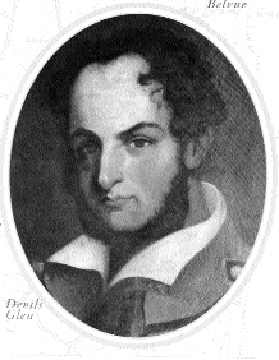
The status of Joseph Holt (above) suffered as a result of the elevation of Michael Dwyer (below) as Wicklow’s hero.
In August 1898, when the centenary celebrations of the Rebellion of 1798 approached their climax, George McSweeney wrote: ‘of all the leaders of the United Irishmen perhaps there was no career more remarkable than Joseph Holt, and yet there is no actor in the great drama of ‘98 to whom it is harder to assign a just place in the history of the period’. McSweeney pinpointed the Memoirs of Joseph Holt (1838) as the principal source of the ambiguity surrounding its ostensible author as they presented him as a man who had been ‘forced into Rebellion’ and ‘cared nothing for reform’. It was not then realised that this false impression was largely the responsibility of the editor, Thomas Crofton Croker, chief clerk of the Admiralty and a noted folklorist, who interpolated many digressions depicting Holt as a condescending anti-Catholic bigot.
Ambiguous reputation
Holt’s thoroughly unpleasant literary persona, when added to the somewhat suspicious fact that he survived 1798 and returned from exile in Australia, did not endear him to those in the thrall of the influential historian Fr. P.F. Kavanagh. The Memoirs, paradoxically, were also vilified by elements of the unionist readership Croker’s revisions had been intended to mollify. Isaac Butt’s review for the Dublin University Magazine claimed that the two volumes were ‘a disgusting farrago of blood boultered egotism, the irreligious pulings of affected religion, and the conscientious sensibilities of a wholesale murderer’.
Holt’s status also suffered because of disinterest in the Wicklow theatre and the elevation of Michael Dwyer as the county’s alternate hero figure by the 1870s. Dwyer was an eminently suitable substitute having spent five years on the run in the mountains during which time he had many dramatic escapes and conspired with Robert Emmet. By the 140th anniversary of the Rebellion in 1938 plans to honour Holt on the site of his Roundwood farm stalled as soon as the foundation stone was laid and Cork historian Sean Ó Coindelbháin suggested a few years later that the Wicklowman’s name be erased from that city’s 1798 memorial in view of his alleged treachery.
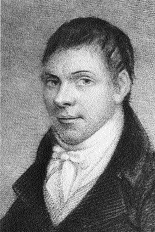
Contrary to the popular record, Holt was arguably the most militant leader of the Rebellion. He was also one of the highest ranking Church of Ireland commanders produced by the Leinster theatre and ultimately wielded greater authority than that enjoyed by his impressive co-religionists Anthony Perry of Inch and William Barker of Enniscorthy. This circumstance is only partly attributable to the flourishing of a pluralist organisation in a county where over one-fifth of the population were non-Catholic. Of real consequence were the circumstances of Holt’s command, which, in the aftermath of the mass surrenders of July 1798, was the largest body of its kind under arms. It was, furthermore, the only faction poised to intensify the struggle when the French landed in Mayo in August 1798 at which time ‘General Holt’ was indisputably the best known and most feared rebel leader.
Fearless manhunter
Holt served a brief stint as a recruiter for the 32nd regiment and as a Volunteer in Arklow but it was his experiences as a baronial sub-constable in the late 1780s that developed the nascent skills of a guerrilla fighter. He was reputedly an exceptionally effective and fearless manhunter in Wicklow, Wexford, Dublin and Kildare: a well informed correspondent of the Edinburgh Advertiser claimed that Holt’s prowess in the role of ‘thief-taker general…inspire[d] terror in breasts before not susceptible to fear’. Possessed of a ‘stern and manly aspect, strong, and well made, singularly athletic, about five feet eleven inches high’, Holt was credited in October 1798 with ‘those talents best calculated to impose on the desperate multitude with whom he acts’.
Work as a cloth assessor in Rathdrum obliged Holt to visit the remote mountain communities where he enhanced an already comprehensive and reputedly unrivalled knowledge of county geography. This familiarity was exploited by him during or shortly after the spring of 1797 when he and at least three of his four brothers joined the United Irishmen.
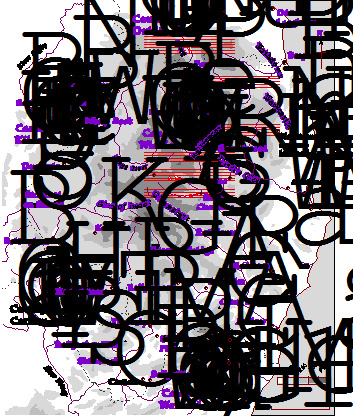
(Matthew Stout)
Joseph became a recruiter and was evidently elected to the position of captain before the close of 1797. Holt forged links with republicans from Dublin’s south city who fostered the conspiracy in south Leinster and assumed national control when the provincial directory was decimated by arrests in March 1798. He was personally acquainted with key organisers such as William Putnam McCabe of Belfast and Fr. John Martin of Drogheda prior to the Rebellion and clearly liaised with them on behalf of the north Wicklow sector.
Marked man
This profile and the work of informers ensured that Holt was a marked man several weeks prior to the outbreak of Rebellion. Wicklow was gripped from early April by the full force of state terror and Holt was on the run in the mountains before 10 May 1798 when his Mullinaveigue farmhouse was burned. This attack punished an overture by him to two Antrim militiamen billeted on the property and local commander Major Joseph Hardy claimed that it was the first reprisal of its kind to receive his sanction. Holt’s autobiography, even in its original form, however, is not an entirely reliable account of his experiences in this period as it was geared towards generating income and respectability in early nineteenth-century Ireland. Much of what he obscured can be traced from Castle intelligence papers and the testimony of those who fought with him as collected by Luke Cullen in the early to mid-1800s.
Elements of Wicklow’s 14,000 United Irishmen were amongst the first engaged on the night of 23 May 1798 and by dawn hundreds had mobilised in the western barony of Talbotstown. Baltinglass, Stratford-on-Slaney and Dunlavin were attacked on the 24th but little of consequence happened in Holt’s native Ballinacor barony until five days later when he led 300 men from the Devil’s Glen to Annamoe to burn the home of ultra-loyalist magistrate Thomas Hugo. They were temporarily dispersed by a military relief force who unwittingly broke up one of three rebel columns preparing to attack the garrison of Newtownmountkennedy on the 30th. Holt’s men were consequently absent when over 1,000 of their comrades were repulsed from the strategic town, a check which was compounded the following day by the loss of Blackmore Hill camp near Blessington.
Battle of New Ross
With an early city attack postponed and large scale mobilisation in north Wicklow inhibited by early defeats and widespread army atrocities, Holt was one of several leaders who went south to Wexford where matters were known to have taken a more favourable course from 27 May. Supplies were issued to the company under the command of ‘Colonel Holt of Wicklow’ at Corbet Hill and/or Carrickbyrne camp prior to the attack on New Ross on 5 June but they were evidently part of the massive army that was not committed to the battle. Another Wicklow group under William Byrne of Ballymanus returned to Mount Pleasant camp near Tinahely where around 2,000 quickly rallied as the ‘Ballymanus division’ which operated with the north Wexford army. Holt’s faction retraced their steps to north Wicklow where they awaited news of the anticipated breakthrough at Arklow.
Fighting in the Wicklow mountains was an attractive option for the native rebels who could traverse the ranges extending from the Rathfarnham district of south county Dublin as far as Wexford with little fear of interference. The near road-less, poorly mapped and boggy terrain of central Wicklow was so difficult of access that the army’s potentially devastating asset of cavalry was almost useless beyond the role of reconnaissance and their cannons nothing but an exhausting encumbrance. Battle against light infantry could easily be avoided by the rebels, moreover, once the rudimentary precaution of posting sentries was taken as red coats were easily spotted on a bleak and virtually treeless highland landscape. Excellent weather in the summer of 1798 minimised the hazards of exposure while subsistence was provided by the huge quantities of livestock abandoned by the fearful loyalists and neutrals who had evacuated Carnew, Tinahely, Shillelagh, Donoughmore and Ashford. With no supply lines to forfeit and none of the heavy baggage that slowed their adversaries, rebel mobility in the Wicklow mountains posed a threat to which the government had no solution.
Defeat at Arklow on 9 June put paid to attempts to break out of Wexford by which time Holt commanded in excess of 1,000 Ballinacor, Rathdown and Newcastle rebels and exerted influence over allied corps from Kildare and Dublin. Frustration at the Arklow reverse was vented by the burning of over twenty loyalist homes in the Roundwood area on the night of 14 June which were singled out from the general citizenry with great discipline and discrimination. Skirmishes with the Rathdrum yeoman cavalry and Reay Highlanders ensued for several days in which both sides enjoyed minor victories of little strategic consequence.
The government victory at Vinegar Hill on 21 June precipitated the juncture of all Wicklow forces three days later in the hills overlooking the Carlow border town of Hacketstown. Garret Byrne of Ballymanus and Edward Fitzgerald of Newpark had led their north Wexford/south Wicklow column from Enniscorthy through ‘Needham’s gap’ to the Wicklow mountains where they drew Holt’s men as well as new recruits to their banner. Holt’s precise role during the battle on the 25th is unclear but it was claimed that his horse was shot from under him during the day long assault. No stratagem of the cannon-less rebels succeeded in rooting the defenders out of their stone barracks but consolation was taken the following day when the abandoned building was fired by a rebel patrol. A less concerted effort to storm Carnew also failed on 30 June for identical reasons, although the day had already yielded a famous victory at nearby Ballyellis where a masterful ambush had been laid by Holt. Ballyellis consolidated his growing stature within the officer committee that controlled the rump forces and he demonstrated a degree of tactical genius in organising the deployment of insurgents who inflicted forty-nine fatalities on their Ancient Britons, 5th Dragoon Guards and yeomen enemies.
A disappointing skirmish at Ballyrahan Hill near Tinahely on 2 July killed two yeomen captains and seventeen of their men but impressed many rebels with a sense of futility. Once again loyalist possession of a fortified redoubt had thwarted rebel intentions. Unwilling to campaign in Wexford where supplies were increasingly difficult to obtain and military opposition stronger than ever, Holt detached his followers from the Ballymanus division and withdrew to the relative security of north Wicklow.
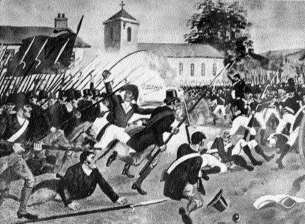
The Battle of New Ross–prior to the attack supplies were issued to a ‘Colonel Holt of Wicklow’. (National Library of Ireland)
This transpired to be a prescient decision as the inauspicious conditions of the Wexford theatre frustrated the plans of their comrades. The trend to accept the proffered amnesty terms greatly accelerated there in the first week of July when the vast majority of insurgents retired from the Rebellion. Several thousand of those determined to press on were obliged to follow Fitzgerald and Garret Byrne back into Wicklow where they combined forces with Holt at Whelp Rock on the slopes of Blackmore Hill.
Midlands debacle
A presence in the Wicklow mountains yielded little scope for the rebels to prosecute the Rebellion to a satisfactory conclusion and it was agreed to trek into Meath to gather recruits en route to south Ulster. Holt’s deep-rooted opposition to the plan and his conviction that they should instead attack Newtownmountkennedy did not deter him from accompanying the main force from Whelp Rock into Meath where they met with disaster after disaster. A costly repulse at Clonard on 11 July and a government assault on their camp at Ryndville Hill the following day fractured the fatigued rebels who had already shed more deserters than gained recruits. Holt’s status in the army increased when he arranged a rear guard action which slowed the dragoons and probably prevented the total rout of the insurgents when vulnerable in retreat. He was twice wounded in this endeavour and was cut off from the main body when they were again brought to battle and defeated at Knightstown bog on the 14th. This loss resulted in the near complete dissipation of the United Irish struggle beyond the Wicklow mountains.
Following the midlands debacle Holt was the only leader of note both willing to persevere and capable of commanding a sizeable body of men. Almost all his surviving associates surrendered under terms that admitted them to the pact negotiated by the high-ranking ‘state prisoners’ who had been arrested before the Rebellion. Holt had no intention of compromising and prior to November 1798 made Glenmalure, Whelp Rock and the King’s River valley the principal resorts of up to 2,000 rebels. Government concern at the prospect of a ‘brigand war’ smouldering in Wicklow and possibly emanating from the county caused them to dispatch General John Moore to implement a proactive amnesty program. Moore and the Marquis of Huntley established a camp in Imaal in the last days of July where 1,200 rebels were pardoned. Holt’s ranks were reduced to a ‘mere band’ by this moderate approach but mushroomed again when disgruntled loyalists took it upon themselves to persecute retiring insurgents.
Uncomplicated leadership
Holt became a figure of national interest from late July 1798 when his militancy, charisma and the attrition of his peers ensured that he enjoyed a position of uncomplicated leadership. His orders were not mediated through officer committees or subject to the amateurish whims of a theoretical commander-in-chief. Democratic forums, however dear to the ideologically motivated United Irishmen, had no place in warfare, and had engendered bad strategy and indecision in the most decisive of all human pursuits. The peculiar dangers of operating in the mountains may have encouraged junior leaders to either accept Holt’s decisions or to pursue their own agenda in their home areas. In this theatre his maturity, proven ability and physically imposing presence elicited respect.
While the Imaal men attached to Michael Dwyer came and went from the main force as they pleased and were often reluctant to venture outside west Wicklow, units from Glenmalure, Redcross, Arklow, Seven Churches, Aughrim and the Bray area generally accepted Holt’s orders until October 1798 when matters became strained. Although far from absolute, Holt’s authority enabled him to implement militarily sound practices that had not been possible earlier in the Rebellion. An important feature was that the rebels underwent regular training exercises in Glenmalure which improved their responsiveness to orders. This was beneficial to their deployment in combat which was particularly difficult in the exposed Wicklow mountains where friend and foe could generally see each other for miles beyond firing range. Speed was the factor upon which the success of the rebels was predicated and their lives dependent.
Holt subdivided his followers into gun and pike units who rehearsed ambush techniques and closing with their opponents. The fruits of these preparations were seen in late July 1798 when the unexpected arrival of the 60th, 89th and 100th regiments in Glenmalure was met with a disciplined retreat under fire into Imaal. They also experimented with tactics and repulsed 300 Fermanagh militiamen at Knockalt on 1 October by a devastating combination of feints, concealed entrenchments and concentrated firepower. Ten soldiers were left for dead as the survivors fled without their weapons and kit. Insurgent confidence in Holt’s abilities, moreover, was demonstrated by their quick recovery from the shock of a night attack being sprung on them at Greenan bridge around 10 September. Their initial panic subsided when Holt shouted orders for a counterattack, in Miles Byrne’s words, ‘with the voice of a stentor’.
Militia defectors
A positive by-product of the amnesty program was that it stripped Holt of his less resolute and unfit men who were replaced by around 150 defectors from the Antrim, Leitrim, Sligo, King’s County and other militia regiments. These were amongst the most highly motivated and effective insurgents due to their training, equipment and the harshness with which their apostasy was treated by government.
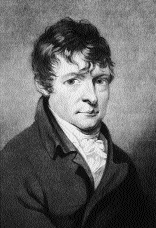
The rebels in Wicklow were far from malcontented fanatics or bandits and apparently waged war in the hope of spearheading a renewed insurrection with French aid. On hearing of Humbert’s landing Holt undertook a major recruiting drive in the Blackwater district of Wexford, west Carlow, Kildare and Dublin. Blessington was occupied within hours of its evacuation by General Moore’s western-bound troops and while it proved impossible to attempt the mooted city attack, Wicklow was convulsed by the heaviest fighting in two months. In the last week of August and the first of September fatal clashes occurred near Coolgreany, Clone Hill, Mucklagh Hill, Blessington, Greenan, Keadeen and Glenmalure. This upsurge continued even after the arrival of news of Humbert’s final defeat at Ballinamuck on 8 September.
Holt’s fortunes culminated on 19 September when at very short notice he led around 500 rebels across almost twenty kilometres of highland to capture Aughrim. Having engaged and then pursued the Rathdrum cavalry and Hunter Gowan’s ‘Black Mob’ garrison out of range the insurgents set about vandalising local yeomanry homes. This raid lent credence to alarmist reports which asserted that the rebels had menaced Bray, Dundrum, Rathfarnham and even villages as far afield as Celbridge in Kildare. Holt evinced an awareness of the psychological aspect of warfare and issued several threatening letters such as one which warned Arklow’s garrison in late August that he ‘would speedily be among them and would not spare a single orangeman’. Loyalist clamour obliged Lord Cornwallis to dispatch 2,000 extra troops to the county in late September on yet another fruitless mission to eradicate the rebels.
‘Symbol of Irish resistance’
The comparatively disciplined and purposeful actions of Holt’s force made an deep impression on the Leinster gentry who realised that their activities constituted a major source of instability in the province. Lady Sarah Napier noted the disappointment of her tenantry on hearing of the French defeat but realised that they ‘put a good face on it, still hankering after a chance of a new force, which is collecting in Wicklow, under a clever man called Holt, who rejects mob, and chooses his associates. This keeps up the flame’. The London based Courier carried over sixty-five reports concerning Holt between 5 September and 28 November 1798 and coverage of his exploits in the French Bien Informe apparently made him ‘the symbol of Irish resistance’.
Resistance was characterised if not sustained by a ruthless program of assassination and arson against Wicklow loyalists who incurred the second highest losses of any county in 1798. Dozens of informers, active loyalists and ‘Orangemen’ were put to death by Holt’s men to safeguard themselves and their families. Many were members of the atrocity-prone yeomanries of Carnew, Tinahely and Rathdrum for whom no friendly intercession was likely; Hessians and Ancient Britons were typically executed to avenge their brutality towards prisoners, women and non-combatants. The context for such violence was the cold-blooded killings of at least 106 jailed rebels in Dunlavin, Carnew, Ballymore-Eustace and Newtownmountkennedy between 23 May and 1 June 1798. Resentment at pre-rebellion excesses was sharpened by more recent events which included the massacre of twenty-seven civilians at Aughrim on 22 June 1798. Tensions were further heightened by the army’s extensive scorched earth policy which paralleled the routine destruction by the rebels of all slate-roofed buildings and stone-built premises that were located in the vicinity of their mountain resorts.
Negotiated surrender
The seemingly interminable depredations in Wicklow troubled the Cornwallis administration who sought to restore tranquillity in advance of the Act of Union. When the ‘infamously celebrated’ Holt proved responsive to offers of a negotiated surrender no effort was spared to effect his capitulation on terms short of self-exile or ‘state prisoner’ status. His arrival at Powerscourt on 10 November 1798 was brokered by the La Touches of Delgany and other north Wicklow families who guaranteed that his life would be spared if he came in. Castle spies reported that Holt first conferred with city leaders and had dismissed his remaining subordinates on learning that French naval losses made their efforts untenable if not unjustifiable. Opposed to frittering away his men in a militarily pointless and gruelling winter campaign, and with £300 on his head, Holt agreed to go become a ‘voluntary exile for life’ in New South Wales. This brought to an end co-ordinated armed resistance by the United Irishmen in 1798.
In 1804 Philip Gidley King, governor of the struggling penal settlements of New South Wales, had cause to berate Holt’s ‘inflammant character’ which he claimed had contributed much towards the severe unrest in colony. The Wicklowman had been sent out as a free man on the Minerva in August 1799 and was shortly afterwards punished for complicity in the United Irish plots of 1800. Many former comrades had looked once more to Holt for revolutionary leadership and he featured prominently in the planning stages of the violent Castle Hill revolt of March 1804.
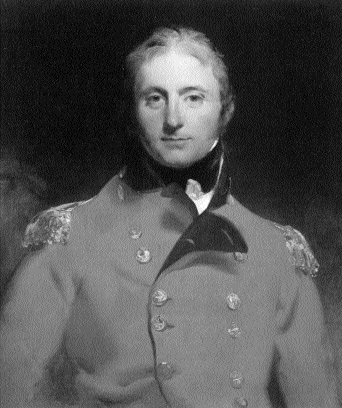
General Sir John Moore-dispatched to Wicklow to implement a proactive amnesty programme. (National Portrait Gallery, London)
This was Holt’s last foray into republican sedition and he afterwards settled down to a life of some prosperity until his pardon enabled him to return to Ireland in 1813. General Holt died in Dún Laoghaire in May 1826 and was buried in a family plot in Carrickbrennan cemetery, Monkstown. This grave, far from being a more convenient Bodenstown, was overgrown and forgotten until restored by a school’s project in the 1980s. Fittingly, Holt’s Irish, American and Australian relatives jointly unveiled a new memorial to their remarkable ancestor in Mullinaveigue on 10 May 1998.
Ruan O’Donnell lectures in Irish history at St Patrick’s College, Drumcondra.
Further reading:
R. O’Donnell, The Rebellion in Wicklow, 1798 (Dublin 1998).
R. O’Donnell (ed.), Insurgent Wicklow, 1798: the story as written by Luke Cullen ODC (Bray 1998).
R. O’Donnell, ‘Michael Dwyer: “The Wicklow Chief”’, in R. Reece (ed.), Irish Convict Lives (Sydney 1993).
T. Bartlett, ‘“Masters of the Mountains”: the insurgent careers of Joseph Holt and Michael Dwyer, County Wicklow 1798-1803’ in Hannigan and Nolan (eds.), Wicklow: History and Society (Dublin 1994).
















